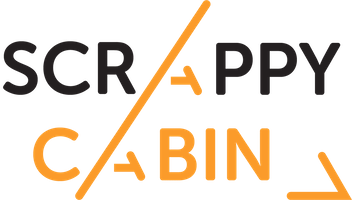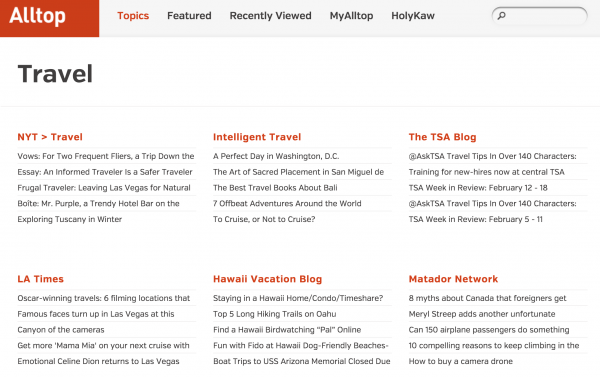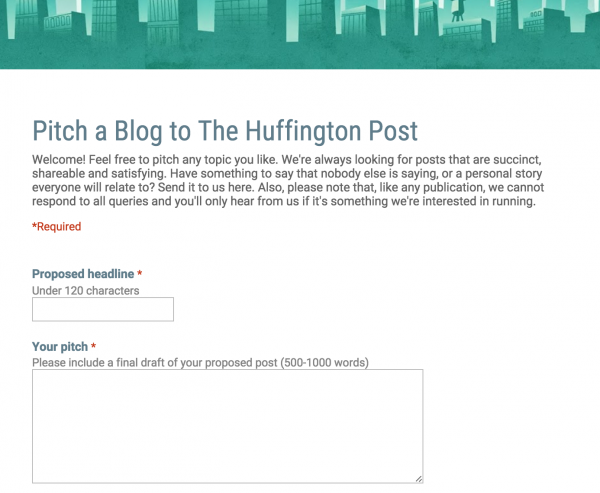Get a Column on an Industry Publication
One-off guest posts are good and can be useful for driving traffic to your website, but having an on-going writing gig for an industry publications will seriously benefit you in the long term.
Not only are you building your name within the industry, but you're also creating a relationship that you can regularly tap into to promote new content on your own website and bring through a steady flow of relevant backlinks.
Step 1: Finding Publications to Write For
One of the first places that I look is on AllTop.com.
All you need to do is search for a keyword relevant to your industry and you'll get a list of the top publications and blogs relevant to you.
From here I tend to add the list of relevant blogs into a spreadsheet so that I can do some further analysis into them.
Step 2: Finding Opportunities
For each of the websites you've got in your list you'll want to find out whether there's an opportunity to become a columnist there.
To scale this quicker, you can use the following search query within Google. Just replace DOMAIN with the domain name of the website:
site:DOMAIN intitle:write for us
This should give you a quick idea of whether they have a page on their site that gives details on how you can apply to become a writer.
Some sites, like the Huffington Post, will ask you to pitch an idea to them first. This is a perfect entry point to show your worth in order to request something more on-going.
Step 3: Making Contact
Once you have some websites in mind that you'd like to write for, you'll need to pitch yourself to them. Before you go ahead and start emailing them, do the following:
- Get your LinkedIn profile up to date and mention any places where you've published content previously.
- Leave a few detailed comments on some articles within the website you're pitching to (this makes a good conversation piece).
- Share some relevant content from your Twitter account and mention in your bio that you're a writer/columnist.
- If possible, create a portfolio on your website (or elsewhere) that showcases other content you've written.
Once you've done this, here's a good email template that you can use. Just make sure that you personalise it for each publication that you get in touch with:
Subject: Columnist for {{Publication Name}}
Body: Hi {{First Name}},
I hope you’re well.
I’m just getting in touch because I’m a reader and regular commenter on {{Publication name}}. I’m the {{Job title}} of {{Company name}}, {{On-line Description of Business}}.
I’m looking to further build my reputation within the industry by writing for a select few key {{Industry type}} publications (hence why I’m getting in touch with you).
Currently, I’m a regular contributor to {{Website Name}} and the {{Website Name}}, amongst a few others (including my own blog – {{URL here}}) and it would be great to partner with {{Website Name}} to become a columnist.
You can check out my full credentials on my LinkedIn page (I sent you a connection request today) – {{LinkedIn profile URL}}
Here’s an example of some recent articles I’ve written:
- URL of an article written by the individual
- URL of an article written by the individual
- URL of an article written by the individual
I’ve had {{X Number of Years}} experience within the {{Industry type}} industry, so could offer a lot to your readers. Alongside this, I’d be happy to meet any deadlines that you put in place.
Let me know if you need any more information.
I look forward to hearing from you.
{{Signature}}



